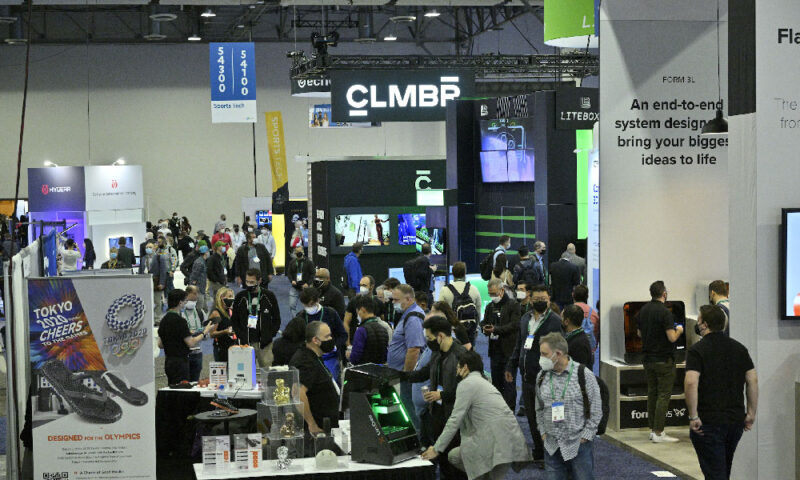
How the CTA’s Membership Model Has Changed
With its revamp, CTA makes room for a broader array of members, nontraditional tech companies and rank-and-file members alike, by leaning into the power of CES.
This is the first entry in the two-part Membership Makeover series, highlighting revamps of association membership models. Check out the second entry, about the Motion Picture Association’s Trusted Partner Network.
The Consumer Technology Association represents a field that has gradually taken over every part of daily life. Things that were once purely analog—watches, toasters, toothbrushes—now come with computers baked in.
And over the past decade, that has helped to reshape what a technology company looks like. It can be a tiny, scrappy startup, or a multinational conglomerate that has suddenly found itself putting gadgets where there weren’t gadgets before.
CTA hopes to make room for all of them—which is why the association recently reset its membership model for the first time in more than a decade.
Kinsey Fabrizio, senior vice president of membership and CES sales for CTA, said that this shift, which was first discussed internally in 2019, came as companies extended the limits of the association’s model.
“A decade ago, we would have never thought that companies like John Deere, Abbott, and Teladoc were emerging and wanting to not only be a part of the technology industry, but be part of CTA,” Fabrizio said.
The result: an opportunity to reset the overall membership approach.
Broadening Membership Scope by Easing Complexity
One of the most obvious reasons a reset was needed was the fact that CTA’s marquee event, CES, was driving interest in membership from organizations that might not have previously seemed like prospects.
“We were having conversations with these companies that, like John Deere, were not a traditional tech company,” Fabrizio said. “They wanted to join CTA, but they were having trouble understanding what membership category they fit into with our old model.”
Awkward fits drove a decision-making process that eventually led the association to narrow down the number of categories to just three:
- Core membership, for companies making a traditional tech product of any kind.
- Associate membership, for companies providing services, such as consulting, to CTA members.
- Nonprofit membership, specifically set aside for healthcare organizations.
The first two were somewhat obvious changes, but the third, Fabrizio said, was a significant adjustment, as the association did not previously allow nonprofit members. But the growing demand among nonprofits in the healthcare space, such as hospitals, created a demand.
The move to broader categories has made it easier for nontraditional companies to take a role in committees and standards-building processes, Fabrizio added.

Rewarding Members for Exhibiting at CES
CES’ importance to CTA offered the association opportunities to better incorporate the event into its member benefits. Under the new model, CES exhibitors receive CTA membership discounts, something Fabrizio said the association has never done before for member dues.
“We never rewarded members for their participation and investment into CES,” she said. “We gave them a discount on their given space for being a member, but we never rewarded them back for their membership dues.”
This, she said, has proven to be popular with its members in the months since the revamp was announced.
Supporting the Rank and File
While CTA is best known for offering a stage to large companies such as Samsung and LG at CES, the association’s bread and butter is smaller organizations, which represent 80 percent of the organization’s membership, and occasionally become bigger fish. (A famous example of this is Fitbit, which won an innovation award at CES in 2009 and was later acquired by Google.)
With that in mind, CTA has focused on enhancing the experience for smaller members, who rely on the association for support. Advocacy support is particularly instrumental to the success of these members, as they often don’t have internal advocacy resources.
“They rely very heavily on our team, whether it’s establishing communications with lawmakers and helping to create the conversation, or even weekly briefs about what’s going on on the Hill and sharing key issues that they should be aware of,” she said.
Lessons and Takeaways
Throughout this process, which was built over an extended period during the pandemic, Fabrizio said it was important for CTA to get feedback from all sides, including existing members and fellow associations that may have dealt with similar challenges in the past.
She also recommended focusing on communication at all levels, including the executive board, member committees, and each individual member. However, no matter what, keep members at the center of the conversation.
“Spend time with your members, ask all the questions, get all of their input and feedback,” she said. “I think when they are a part of the process, you really end up with a solution that is good for them, it’s good for the organization, and everyone’s happy.”
A scene from the exhibit floor at CES 2022. (CTA handout photo)






Comments